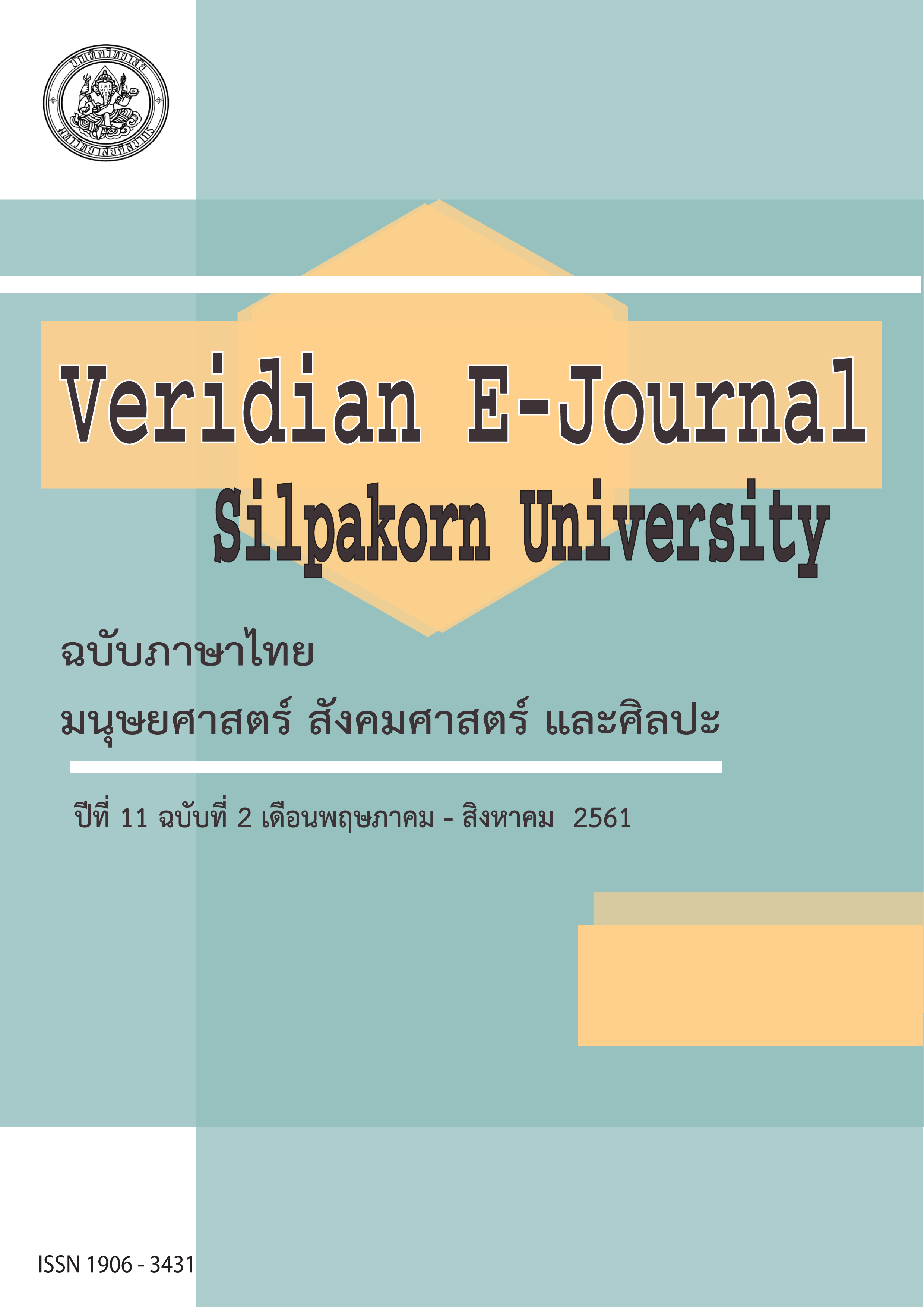ผลการใช้รูปแบบการเรียนรู้แบบ PACLE เพื่อเสริมสร้างความสามารถในการแก้ปัญหาอย่างสร้างสรรค์ สำหรับนักเรียนชั้นมัธยมศึกษาปีที่ 1 (The Effect of Using the PACLE Learning Model to Enhancethe Creative Problem Solving Abilities of Seventh Grade Students)
Main Article Content
Abstract
การวิจัยครั้งนี้มีวัตถุประสงค์ เพื่อพัฒนาความสามารถในการแก้ปัญหาอย่างสร้างสรรค์ให้เกิดขึ้นใน ตัวผู้เรียน โดยการพัฒนารูปแบบการเรียนรู้แบบ PACLE ตามแนวคิดของการแก้ปัญหาอย่างสร้างสรรค์และกระบวนการออกแบบทางวิศวกรรม เพื่อเสริมสร้างความสามารถในการแก้ปัญหาอย่างสร้างสรรค์ สำหรับนักเรียนชั้นมัธยมศึกษาปีที่ 1 กลุ่มตัวอย่างที่ใช้ในงานวิจัยคือ นักเรียนชั้นมัธยมศึกษาปีที่ 1 จำนวน 2 ห้องเรียน จำนวน 62 คน ที่ศึกษาในภาคเรียนที่ 1 ปีการศึกษา 2560 ใช้วิธีการสุ่มอย่างง่าย โดยใช้ห้องเรียนเป็นหน่วยสุ่ม แบบแผนการวิจัย เป็นการวิจัยเชิงทดลองแบบทดลองก่อนเรียนและหลังเรียนแบบมีกลุ่มควบคุมเวลาที่ใช้ใน การทดลอง 21 ชั่วโมง เครื่องมือที่ใช้ในการวิจัยครั้งนี้ ประกอบด้วย
1) แผนการจัดการเรียนรู้ตามรูปแบบการจัดการเรียนรู้แบบ PACLE จำนวน 5 แผน 2) แบบวัดทักษะการแก้ปัญหาอย่างสร้างสรรค์ จำนวน 2 ชุด วิเคราะห์ข้อมูลโดยใช้สถิติเชิงบรรยาย การเปรียบเทียบค่าเฉลี่ยของคะแนนก่อนเรียนและหลังเรียนของกลุ่มทดลองด้วยสถิติทดสอบค่าทีที่กลุ่มตัวอย่างไม่เป็นอิสระจากกัน การเปรียบเทียบค่าเฉลี่ยของคะแนนหลังเรียนของกลุ่มทดลองและกลุ่มควบคุมด้วยสถิติทดสอบค่าทีที่กลุ่มตัวอย่างเป็นอิสระจากกัน และการวิเคราะห์ข้อมูลเชิงคุณภาพ โดยใช้การวิเคราะห์เนื้อหา
ผลการวิจัยพบว่า 1) นักเรียนกลุ่มทดลองมีคะแนนเฉลี่ยความสามารถในการแก้ปัญหาอย่างสร้างสรรค์หลังเรียนสูงกว่าก่อนเรียนอย่างมีนัยสำคัญทางสถิติที่ระดับ .05 2) นักเรียนกลุ่มทดลองมีคะแนนเฉลี่ยความสามารถในการแก้ปัญหาอย่างสร้างสรรค์หลังเรียนสูงกว่ากลุ่มควบคุม อย่างมีนัยสำคัญทางสถิติที่ระดับ .05 3) นักเรียนมีพัฒนาการของทักษะการแก้ปัญหาทั้ง 5 ด้าน ได้แก่ ด้านการเข้าถึงปัญหา ด้านการคิดและแสวงหาวิธีการแก้ปัญหา ด้านการทบทวนและเตรียมการ ด้านการวางแผนแก้ปัญหา และด้านการตรวจสอบการปฏิบัติที่ดีขึ้น นอกจากนี้ยังพบว่า นักเรียนกลุ่มทดลองมีการปรับพฤติกรรมการเรียนทางบวกในการจัดการกับอารมณ์ของตนเองในขณะทำการแก้ปัญหาได้ดีขึ้น ควบคุมและเสริมแรงตนเองโดยใช้การมีส่วนร่วมของสมาชิกในกลุ่มและการบันทึกพฤติกรรมตนเอง
The purpose of this research was to develop creative problem solving ability with the PACLE learning model designing based on creative problem solving and engineering design process for enhancing the creative problem solving abilities of seventh grade students. The samples used in this study were sixty-two students in two classrooms who were studying in the first semester of the 2017 academic year using simple random sampling. The research design used in this study was a pretest-posttest control group design using twenty-one periods for implementation. The research instruments consisted of : 1) the five lesson plans according to PACLE learning model 2) the two creative problem solving skills tests. The collected data were analyzed by descriptive statistics, comparing pretest and posttest mean scores using t-test for dependent samples, and comparing experimental and control groups posttest mean scores using t-test for independent samples. Moreover, the qualitative data was analyzed using content analysis.
The results found that ; 1) the post-test creative problem solving score of the experimental group was higher than the pre-test score at a .05 level of statistical significance; 2) the post-test score of the creative problem solving of the experimental group was higher than the post-test score on the creative problem solving of the control group at a .05 level of statistical significance; 3) students tended to have a better development of the creative problem solving skills in all 5 aspects which were understanding the problem, thinking and seeking solutions, to review and prepare, plan a solution, and checking the result. They also found that students who do the experiment can change their learning behaviour positively as positive behavior they can manage their emotion when they cope with the problems. Furthermore, they control and encourage themselves by using the participation of members and recording their behaviors.
